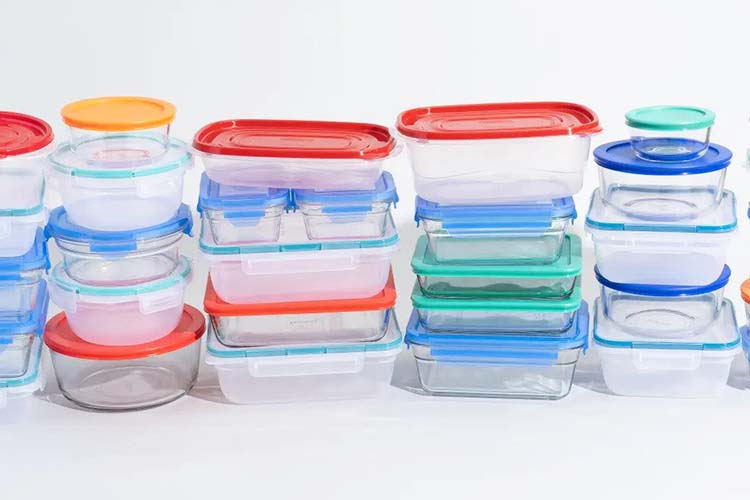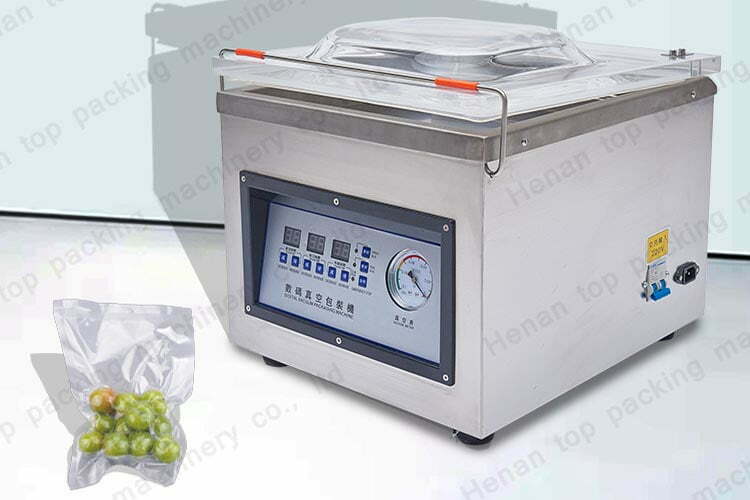روش های بسته بندی مواد غذایی که می توانید در خانه استفاده کنید
کیف ها
از کیسه های پلاستیکی یا پلی اتیلن خیلی نازک استفاده نکنید، زیرا زیر صفر متخلخل می شوند. کیسه هایی با ضخامت مناسب که به طور خاص برای انجماد عمیق ساخته شده اند فقط کسری از هزینه اضافی را دارند. کیسه های پلاستیکی و پلی اتیلن همه کاره هستند و برای انجماد تقریبا همه انواع مواد غذایی مناسب هستند. ایده آل برای سبزیجات، میوه ها، گوشت، ماهی، ساندویچ، کیک، کلوچه، پیش غذا، و اغذیه فروشی ها.
ظروف پلاستیکی
انواع ظروف پلاستیکی و پلی اتیلن برای نگهداری مواد غذایی در زیر انجماد طراحی شده است. آنها را می توان از اکثر فروشگاه های لوازم آشپزخانه خریداری کرد. ظروف پلاستیکی ارزان قیمتی که نمی توانند دمای انجماد را تحمل کنند، شکننده شده و می شکنند و مواد غذایی را بدون محافظت می گذارند.
ظروف پلاستیکی یا پلی اتیلن برای آب میوه های یخ زده، آب سبزیجات، میوه های شربتی، سوپ، خورش، شیر، خامه و همه غذاهای مایع ایده آل هستند. این ظروف برای ساندویچ، کیک، کلوچه، غذای مهمانی و باقی مانده غذا نیز ایده آل هستند.

فویل آلومینیومی
فویل آلومینیومی یک ماده ایده آل برای بسته بندی گوشت، ماهی، کیک، ساندویچ و غیره است. با این حال، به راحتی پاره می شود یا شکافته می شود، بنابراین هنگام پیچیدن غذا در فویل دقت بیشتری داشته باشید.
پمپ های خلاء
پمپ های وکیوم برای حذف هوا از کیسه های پلاستیکی و پلی اتیلن ایده آل هستند. هنگامی که پمپ در داخل کیسه حاوی مواد غذایی قرار می گیرد، می توان هوا را با بستن کیسه روی لوله بیرونی و پمپاژ لوله داخلی به داخل و خارج چندین بار از کیسه خارج کرد. این یک ابزار ساده و موثر است که می توانید آن را از فروشگاه های پیشرو لوازم آشپزخانه تهیه کنید.

کوزه ها
قالب های معمولی شیرینی خانگی را می توان زیر صفر استفاده کرد، به شرطی که زنگ نزنند و یادتان باشد که درب آن را با چسب مخصوص فریزر ببندید. قوطی های حلبی برای محافظت از اقلام شکننده مانند مرنگ، مرنگ خامه ای و غیره ایده آل هستند. این اقلام باید ابتدا در کیسه Ziploc قرار داده شوند و سپس در قالب نگهداری شوند. علاوه بر این، قوطی ها برای نگهداری ساندویچ ها، کیک ها، کلوچه ها و همه محصولات پخته شده استفاده می شود.
برچسب ها
جزئیات محتویات هر بسته باید واضح بماند، حتی اگر بسته به دلیل تراکم خیس شود. برچسب ها را می توان با نوشتن با خودکار چسباند. نشانگرها روی تمام مواد بسته بندی می نویسند اما ممکن است برای همیشه نگهداری شوند. مداد رنگی را می توان روی سطوح زیادی نوشت و معمولاً با آب گرم و صابون شسته می شود. من به شدت توصیه می کنم همه موارد را علامت گذاری کنید. ممکن است فکر کنید جزئیات مطالب را به خاطر خواهید آورد، اما فراموش کردن آن آسان است.
روش بسته بندی تخت
بسته بندی های تخت به راحتی روی هم چیده می شوند و فضای بسیار کمی را اشغال می کنند. به سادگی یک مقدار غذا را در یک کیسه پلاستیکی یا پلی اتیلن با کیفیت بالا قرار دهید. کیسه را صاف در یک طرف قرار دهید، به آرامی تکان دهید تا به طور یکنواخت پخش شود و سپس به آرامی آن را صاف کنید. هوا را با پمپ خلاء بیرون بیاورید یا با دست با دقت فشار دهید. با پیچ سیم مهر و موم کنید. بسته های تخت به راحتی روی هم چیده می شوند و به تمیز و مرتب نگه داشتن یخچال شما کمک می کنند.
روش جریان آزاد
برای جلوگیری از چسبیدن غذا به هم، روش جریان آزاد را توصیه میکنم. به سادگی سبزیجات، میوهها، گوشت یا ماهی آماده شده را روی یک سینی صاف، صیقلی و خشک قرار دهید. سینیهای بدون پوشش را در یخچال قرار دهید، ترجیحاً روی سطح انجماد سریع. پس از یخ زدن غذا، به راحتی از سینی جدا میشود. غذاهای یخ زده شل را در یک کیسه پلاستیکی یا پلیاتیلنی با کیفیت بریزید. میتوان سینی دوم و سوم غذاهای یخ زده را به سینی اول اضافه کرد تا کیسه بزرگی از غذای شل «جریان آزاد» به دست آید. هوا را خارج کرده و با سیم پیچ خورده ببندید. روش جریان آزاد به شما امکان میدهد به راحتی قطعات یا وعدههای غذایی فردی را از مقدار زیادی بدون ذوب شدن جدا کنید.
